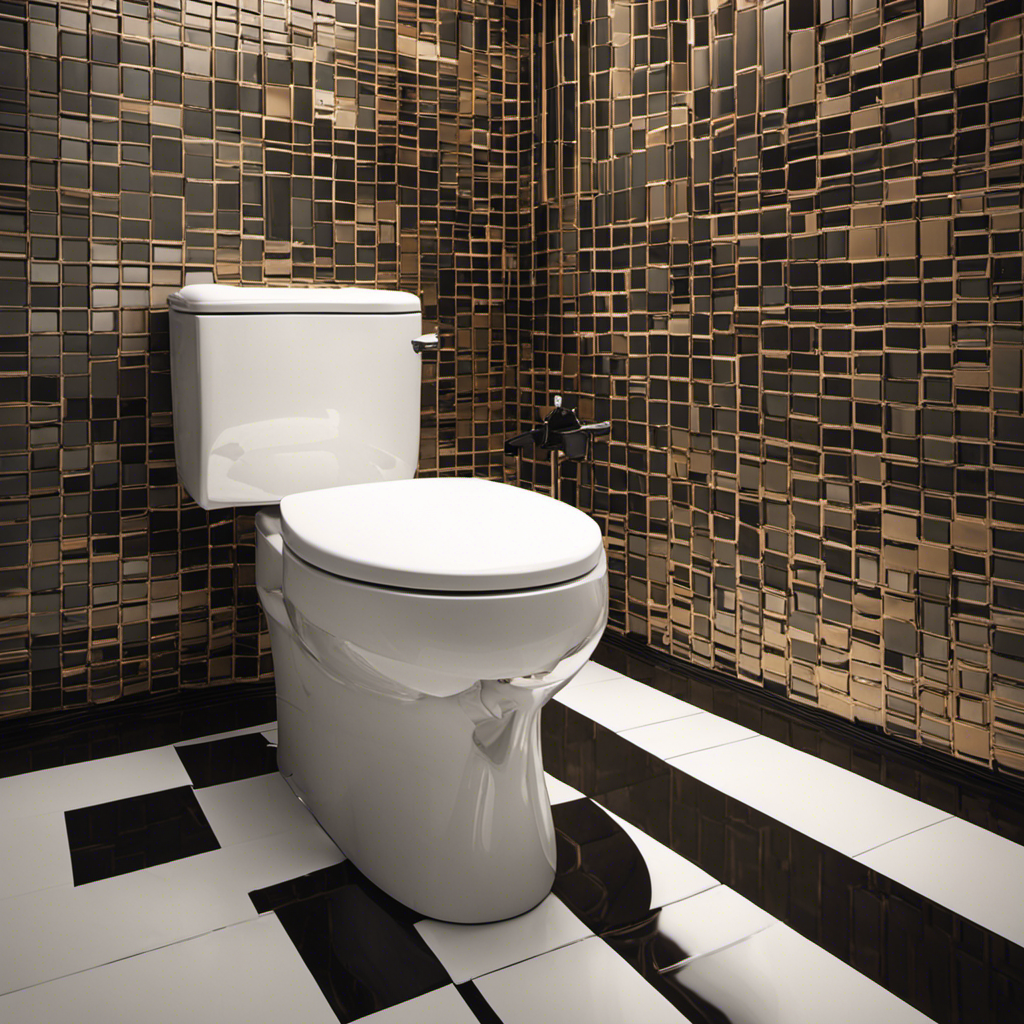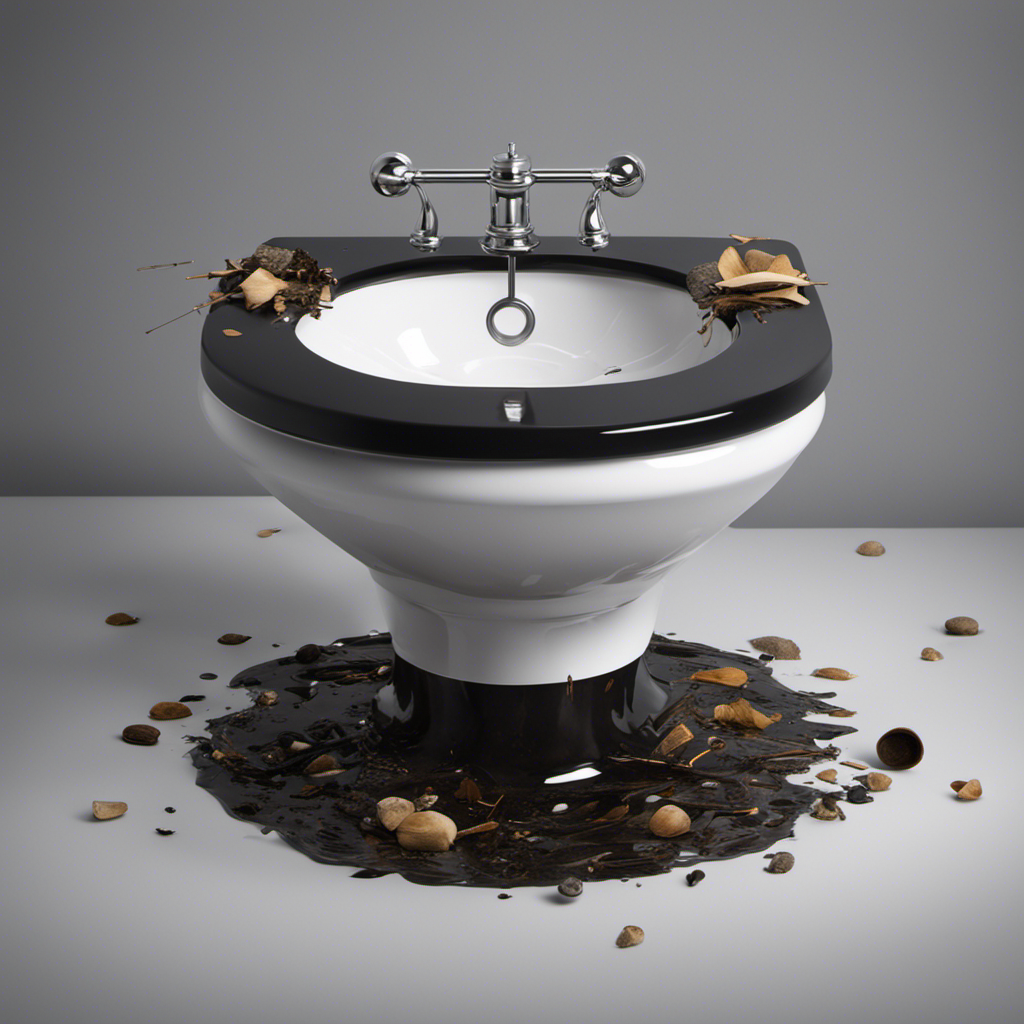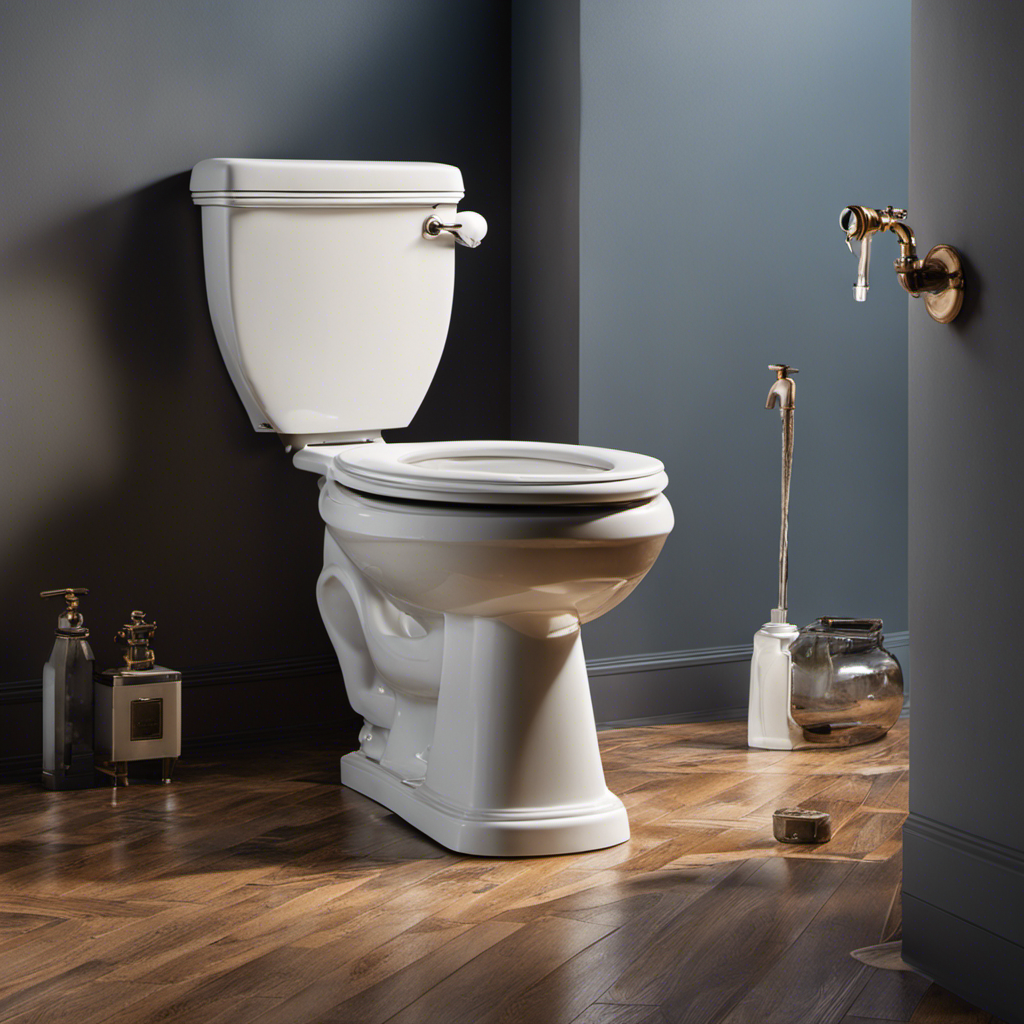Hey there!
Ever wondered why your toilet is wobbly? Well, I’ve got you covered. As a plumbing expert, I’m here to share my technical knowledge and problem-solving approach to help you stabilize your toilet.
In this article, I’ll outline common causes of toilet wobbling, show you how to check for a loose base, and provide a step-by-step guide to fixing the issue.
So, let’s dive in and get your toilet back on solid ground!
Key Takeaways
- Loose mounting bolts, regular usage and movement, improper tightening of bolts, and lack of stability due to improper installation are common causes of a wobbly toilet.
- Signs and symptoms of a wobbly toilet include shaking or rocking when sitting on the toilet, water leaks from the base, uneven toilet base due to an uneven floor surface, loose bolts causing instability, and deterioration or gaps in caulking around the base.
- To check for a loose toilet base, gently push on different areas around the base to check for movement, observe any shifting or rocking motion, look for gaps between the base and the floor, and inspect caulking for signs of deterioration or gaps.
- DIY solutions for a wobbly toilet include stabilizing the toilet base by tightening the bolts, checking stability by gently rocking the toilet and continuing to tighten bolts if needed, adjusting the flange height, ensuring the flange is securely fastened to the floor, and tightening the mounting bolts using a wrench.
Common Causes of Toilet Wobbling
One of the most common causes of a wobbly toilet is loose mounting bolts. Over time, the bolts that secure the toilet to the floor can become loose due to regular usage and movement. When these bolts are not tightened properly, the toilet can start to wobble, causing inconvenience and potential damage.
To prevent a wobbly toilet, it is essential to ensure that the mounting bolts are tightened securely. Regularly checking and tightening these bolts can help maintain the stability of the toilet. Additionally, using a wax ring or a rubber gasket between the toilet and the floor can provide added stability.
By addressing loose mounting bolts and using proper installation techniques, you can prevent toilet instability and avoid potential issues down the line.
Now, let’s move on to discuss the signs and symptoms of a wobbly toilet.
Signs and Symptoms of a Wobbly Toilet
If your toilet is unstable, you may notice it shaking or rocking when you sit on it. Toilet instability can be caused by various factors, including loose bolts, a worn-out wax ring, or an uneven floor surface. Identifying the signs and symptoms of a wobbly toilet is crucial in preventing further damage and potential leaks. To help you understand the severity of the issue, here is a table summarizing the common signs and symptoms of a wobbly toilet:
| Signs and Symptoms | Causes | Solutions |
|---|---|---|
| Shaking or rocking | Loose bolts | Tighten the bolts |
| Water leaks | Worn-out wax ring | Replace the wax ring |
| Uneven toilet base | Uneven floor surface | Level the floor or use shims |
How to Check for a Loose Toilet Base
To check if your toilet base is loose, you can start by gently pushing on different areas around the base to see if there is any movement. A wobbly toilet base can be a sign of potential damage or instability in the plumbing system. It is important to address this issue promptly to prevent further damage or leaks.
When checking stability, pay attention to any shifting or rocking motion, as well as any gaps between the base and the floor. Additionally, inspect the caulking around the base for any signs of deterioration or gaps. If you notice any movement or instability, it is recommended to further investigate and take necessary steps to fix the problem.
By addressing a loose toilet base early on, you can prevent more serious issues down the line.
In the following section, we will provide a step-by-step guide on fixing a wobbly toilet.
Fixing a Wobbly Toilet: Step-by-Step Guide
When fixing a wobbly toilet, it’s important to gather the necessary tools and materials beforehand. To prevent toilet wobbling, it is crucial to ensure proper installation.
Common toilet installation mistakes, such as improper floor securing or loose bolts, can lead to a wobbly toilet. To fix this issue, start by turning off the water supply and flushing the toilet to drain the tank.
Use a wrench to tighten the nuts securing the toilet to the floor, making sure not to overtighten them. Check the toilet base for any cracks or damage, as this could also cause wobbling. If necessary, replace the wax ring under the toilet to ensure a proper seal.
Tools and Materials Needed to Stabilize a Toilet
First, gather all the necessary tools and materials to stabilize your toilet. You will need an adjustable wrench, a screwdriver, a level, shims, and a wax ring. These items are essential for ensuring that your toilet remains stable and secure.
To prevent toilet wobbling, it is important to maintain a stable base. Start by checking the toilet bolts and tightening them if necessary. Use the level to ensure that the toilet bowl is level from front to back and side to side.
If the toilet is still wobbly, place shims under the base to provide additional support. Finally, replace the wax ring to create a proper seal between the toilet and the floor.
DIY Solutions for a Wobbly Toilet
If you’re dealing with a wobbly toilet, there are a few key points to consider for stabilizing the toilet base, adjusting the flange height, and tightening the mounting bolts.
These three steps can help address the problem and ensure a secure and stable toilet installation.
Stabilizing Toilet Base
To stabilize the toilet base, you can tighten the bolts on each side. This simple solution is often effective in fixing a wobbly toilet. Here are some steps to help you properly secure your toilet:
- Start by locating the bolts on each side of the toilet base.
- Use a wrench to tighten the bolts, but be careful not to overtighten, as this can cause damage.
Check the stability of the toilet by gently rocking it back and forth. If it still wobbles, continue to tighten the bolts until it feels secure.
- Finally, test the toilet again by sitting on it and applying some pressure. If it remains stable, you have successfully leveled and secured your toilet.
Adjusting Flange Height
Adjusting the flange height can help resolve stability issues with your toilet. When a toilet wobbles, it is often due to an improper connection between the toilet and the flange. The flange is the piece that connects the toilet to the floor and also serves as a seal. If the flange is not at the correct height, it can cause the toilet to become unstable.
To troubleshoot and fix this problem, you will need to remove the toilet and adjust the flange height. This can be done by adding or removing flange spacers or by replacing the flange altogether. It is important to ensure that the flange is securely fastened to the floor before reattaching the toilet. By adjusting the flange height, you can eliminate toilet wobbling and ensure a stable and secure installation.
To continue addressing the issue of a wobbly toilet, the next step is to tighten the mounting bolts.
Tightening Mounting Bolts
Now, you’ll want to use a wrench to tighten the mounting bolts securely. This is an important step in fixing a wobbly toilet, as loose mounting bolts can cause instability and leaks.
Here’s a step-by-step guide on how to tighten the mounting bolts:
- Make sure the toilet is properly aligned with the flange.
- Use a wrench to tighten the nuts on the mounting bolts, alternating between the two bolts to ensure even pressure.
- Be careful not to overtighten, as this can crack the toilet base.
- Once the bolts are tight, check for any wobbling or movement. If the toilet is still unstable, you may need to consider using shims or replacing the wax ring.
When to Call a Professional Plumber for a Wobbly Toilet
If your toilet is wobbly, it might be time to call a professional plumber. While some minor issues can be fixed with simple DIY methods, a wobbly toilet could indicate a more serious underlying problem that requires expert attention.
It’s important to know when to DIY versus hiring a professional. Attempting to fix a wobbly toilet without the necessary knowledge and experience can lead to costly mistakes and further damage. Common mistakes to avoid when fixing a wobbly toilet include using incorrect tools, overtightening the bolts, or not addressing the root cause of the issue.
A professional plumber has the technical expertise to accurately diagnose the problem and provide a long-lasting solution. They can also ensure that all repairs are done safely and up to code, giving you peace of mind.
Frequently Asked Questions
Can a Wobbly Toilet Cause Water Leaks?
A wobbly toilet can potentially cause water leaks. If the toilet is not properly installed or if there are issues with the flange or wax ring, water can seep out and cause damage. Proper toilet repair is necessary to prevent this.
Can a Wobbly Toilet Damage the Bathroom Floor?
A wobbly toilet can indeed cause damage to the bathroom floor. Signs of a damaged floor include cracks, water stains, and a spongy feeling. Proper toilet installation and regular maintenance are key to preventing this issue.
How Long Does It Take to Fix a Wobbly Toilet?
To fix a wobbly toilet, first identify common causes like loose bolts or a damaged flange. Depending on the extent of the issue, repairs may take anywhere from a few minutes to a couple of hours.
Are There Any Temporary Fixes for a Wobbly Toilet?
There are temporary fixes and DIY solutions available for a wobbly toilet. These can help stabilize the toilet until a permanent fix can be done. I can provide step-by-step instructions for these solutions.
Can a Wobbly Toilet Affect the Flushing Mechanism?
A wobbly toilet can impact the flushing mechanism. Instability can cause misalignment, affecting the water pressure and flow. It’s essential to address the stability issue promptly to ensure optimal flushing performance.
Conclusion
In conclusion, a wobbly toilet can be a common issue with various causes.
It is important to identify the signs and symptoms of a loose toilet base and to check for any instability.
With the right tools and materials, fixing a wobbly toilet can be a straightforward process.
DIY solutions are available for minor wobbling, but if the problem persists or if you are unsure, it is best to call a professional plumber.
Remember, a stable toilet ensures proper functionality and prevents potential damage.
So, why wait? Take action and address the wobbling toilet today!










